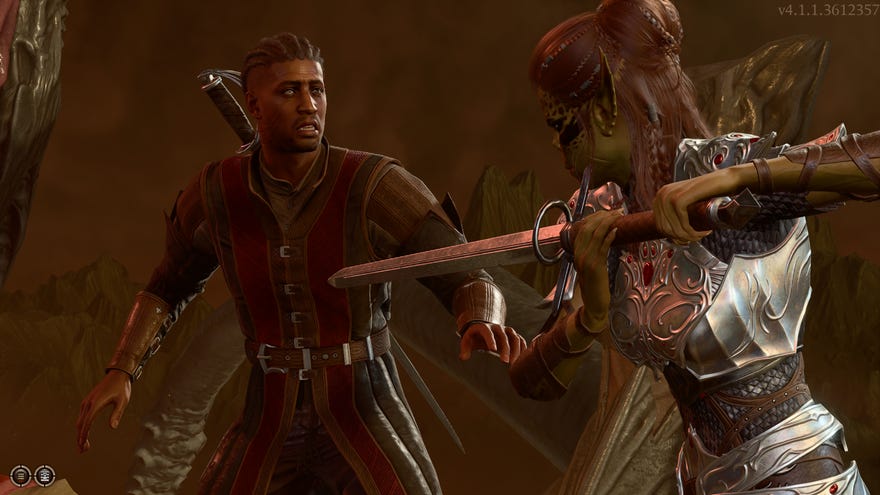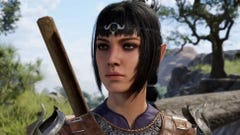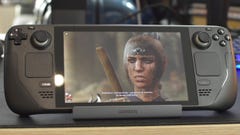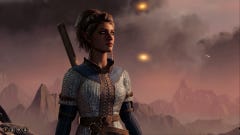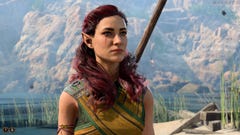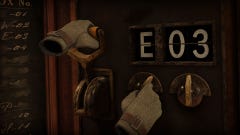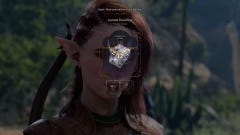Baldur’s Gate 3 system requirements, PC performance, and best settings to use
Party planning
If you’ve been resisting Baldur’s Gate 3’s early access run to save yourself for the full release, there’s good news for both of us: you can fill your knowledge boots with this guide to the launch build’s PC performance and best settings, and I get to avoid feeling like I’m just giving advice to people who’ve been playing this gigantic RPG for two years longer than me. Hell yeah.
As it happens, getting Baldur’s Gate 3 running at its best is probably the simplest thing about it. Despite being a decent looker, it’s playable on plenty of older CPUs and graphics cards, and outside of some occasional stuttering (and a currently-unpalatable Vulkan option) is largely free of technical mishaps. And, if you have a newer, cleverer Nvidia GeForce RTX GPU, DLSS can lend a big old upscaled hand to performance.
All my findings and benchmarks from the new build are below; I’ve tested every graphics setting individually to see which are worth turning down, should you wish to smooth out your dice-assisted adventuring.
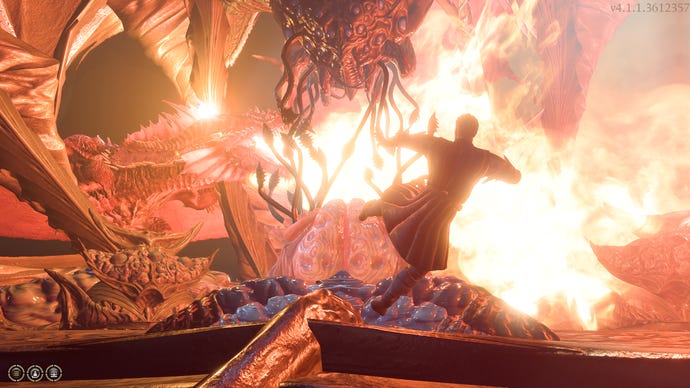
Baldur’s Gate 3 system requirements and PC performance
BG3 does command vast swathes of your SSD or hard drive space – the actual download is more like 122GB than the 150GB stated in these system requirements, but still, that’s no small supply of gigs. Lower-end PCs still have a good shot, mind. Most graphics cards released in the past decade will meet the minimum 4GB VRAM requirement, and the recommended specs list focuses on generations-old GPUs and processors; no RTX 4080 needed here. "SSD required" is a stretch as well, considering there's a toggle in the graphics settings specifically for improving texture loading performance on slow hard drives. You can expect much longer load times on HDDs, though.
Baldur’s Gate 3 Minimum PC specs
- GPU: Nvidia GeForce GTX 970 / AMD Radeon RX 480 (4GB+ of VRAM)
- CPU: Intel Core i5-4690 / AMD FX 8350
- RAM: 8GB
- OS: Windows 10 64-bit
- Storage: 150GB available space
- DirectX: Version 11
- Notes: SSD required
Baldur’s Gate 3 Recommended PC specs
- GPU: Nvidia GeForce RTX 2060 Super / AMD Radeon RX 5700 xt (8GB+ of VRAM)
- CPU: Intel Core i7-8700K / AMD Ryzen 5 3600
- RAM: 16GB
- OS: Windows 10 64-bit
- Storage: 150GB available space
- DirectX: Version 11
- Notes: SSD required
Any RTX graphics cards will still have an advantage over their AMD equivalents, and they’ll unlock DLSS: still the best of the gaming upscalers. Non-RTX cards, including older Nvidia models, can use AMD FSR instead, but for some reason this is the 1.0 version, which looks significantly grainier and less detailed (i.e. worse) than the newer FSR 2.0. DLSS looks better and runs very slightly faster in Baldur’s Gate 3, so yes, RTX hardware is arguably better suited to it.
Still, this is not Remnant II, and upscaling is not necessary for slick performance. The Radeon RX 7600, AMD’s latest mid-ranger, pulled 113fps on Ultra Quality at 1080p, while the last-gen RTX 3070 could average 102fps at 1440p and 56fps at 4K using the same maxed-out preset. The seven-year-old GTX 1050 Ti, a rough equivalent to the minimum spec GPUs, could also produce a workable 44fps at 1080p / Low, albeit with my test PC’s very much above-spec Intel Core i5-11600K and 16GB of RAM. I consistently saw GPU usage at 100% while benchmarking, though, so while a faster CPU can help, the graphics card is more important. You should be fine as long as yours meets those official requirements.
Likewise, speedy 4K is attainable to those with enough horsepower. An RTX 4070 Ti was enough to get Baldur’s Gate 3 up to 88fps at native 4K, still on the Ultra preset, and flicking on Quality-level DLSS pushed that all the way to 124fps. In short, this game scales really well: owners of basic PCs can still join in, and those with luxury GPUs won’t feel like they’re leaving potential performance on the table.
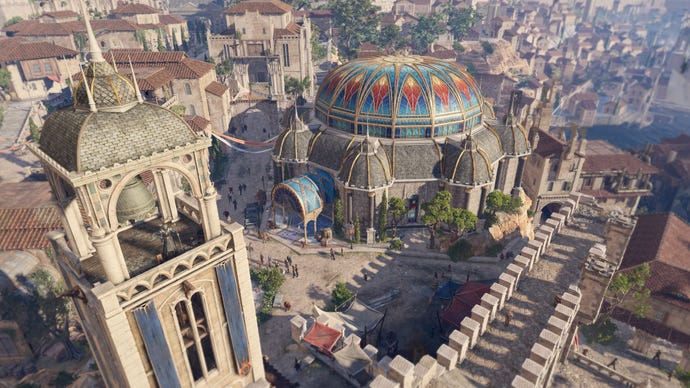
There is, however, a pertinent choice to make before you even get near a settings menu. As the launcher will ask: do you want play Baldur’s Gate 3 with DirectX 11, or the Vulkan API?
On paper, Vulkan should enable higher performance than the geriatric DX11, and developers Larian Studios specifically recommend the former. However, in my experience – and, apparently, that of a lot of early access players – DX11 is actually the one to choose. The same benchmark run that produced that 44fps average on the GTX 1050 Ti only averaged 39fps when I repeated it with Vulkan, an 11% performance disadvantage. The RTX 3070 was also 11% slower at 1440p and 13% slower at 4K, while the Radeon RX 7600 was 4% slower at 1080p. This suggests AMD GPUs may have more of a natural Vulkan affinity, but DX11 is still faster, without introducing any noticeable drawbacks in exchange. There’s no ray tracing, for instance, so a newer renderer isn’t vital for unlocking any specific visual options.
I've only caught two examples of technical impropriety on DX11, and both of them are rare. The first is an occasional, momentary stutter, which can occur during play or cutscenes – but is over quickly and only occurred, for me, once every hour or so. The second is some texture flickering, which appears to be triggered by most of the anti-aliasing options. TAA, DLSS, and DLAA all exhibit it, with only SMAA staying clean. It’s not truly bothersome, though. I only actually saw it on one specific texture during the prologue, which was reused in a few places, but only flickered noticeably when the camera zoomed in for an interaction prompt or dialogue sequence.
Generally, Baldur’s Gate 3 gets a comfortable pass for its techy bits. On desktop PCs, at least - setting it up on the Steam Deck is a more involved process, if also one with a readily available fix for its stability woes. Now, let us consider how to tweak some settings and get it running even better.
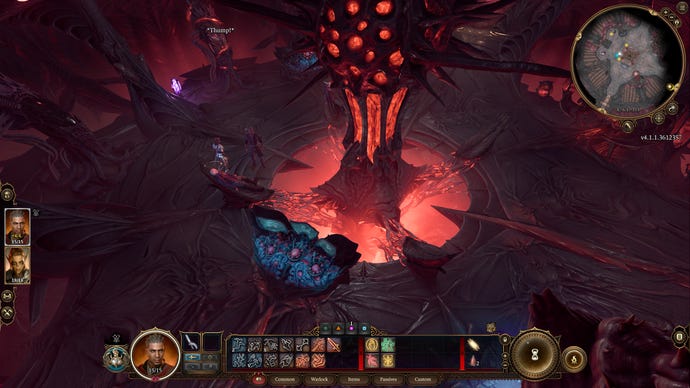
Baldur’s Gate 3 best settings guide
Baldur’s Gate 3 is no exception to the rule of manual settings changes producing finer-tuned results than presets. Even so, there is something to learn from these one-click configurations. Using the RTX 3070 for reference, running at 1440p, the Ultra preset averaged 102fps, High 105fps, Medium 122fps, and Low 156fps. From this, we can see that High probably isn’t worth bothering with at all, and that to get the meatiest framerate improvements, we’re going to need at least some of BG3’s individual graphics options at Low level.
It will still be a balancing act, as all-Low settings are clearly uglier than Ultra. Nevertheless, I reckon I’ve found a combination that will give the best of both presets. First, here’s the full list of changeable settings, along with how they impact performance against that 102fps result on Ultra.
Model quality: Although dropping this from High to Low only nudged performance up to 106fps, a 4% increase, this is actually one of the more impactful settings to change. It also doesn’t make models look that much worse, so it’s fine to reduce.
Detail distance: This can probably stay on High, as changing to Low only gave me an extra 1fps.
Instance distance: As above, there was just one additional frame per second to be gained from the Low setting, so keep this high.
Texture quality: I’m also not convinced that this needs lowering. Medium isn’t significantly faster, at 104fps, and Low just hurts fidelity too much.
Texture filtering: I’d suggest turning this right down to Trilinear mode. It gives a relatively spirited boost, up to 107fps on my RTX 3070, and the visual quality difference is minimal.
Animation level of detail: Stick to High. Low gave me a mere 1fps improvement, so isn’t worth the cut.
Slow HDD mode: This might help with slow-loading textures when enabled, but won’t visibly affect performance at all when Baldur’s Gate 3 is installed on an SSD.
Dynamic crowds: Switching this off is arguably unnecessary. Losing the extra detail didn’t change my average performance by a single frame, and large crowds are rare anyway.
Shadow quality: You can set this to Low for a modest yet tempting speed boost; up to 108fps in my case, and without seriously damaging how shadows look. There is one tradeoff, a weird raked effect on certain ground textures, but it’s not too frequent or bothersome.
Cloud quality: Leave this on High, I say. Low doesn’t seem to affect average performance either way.
Fog quality: This, on the other hand, can be reduced for a little framerate nudge. Low quality got me 107fps, a 5% rise.
Nvidia DLSS: The big gun. While DLSS is best deployed at 1440p or higher – 1080p with upscaling will always look slightly fuzzier – it’s highly potent in Baldur’s Gate 3, turning that 102fps average into 130fps on the sharpest Quality setting. If you’ve got both a GeForce RTX card and a high-res gaming monitor, it’s ideal.
AMD FSR 1.0: Other graphics cards still have an upscaling option, though again, I wish it was a newer version of FSR. This 1.0 iteration could get my test PC up to 128fps on Ultra Quality mode, but it looks nowhere near as crisp and clean as Quality DLSS. Maybe only consider it if you’re playing at 4K, or are really struggling with 1440p.
FidelityFX Sharpening: AMD’s sharpening filter doesn’t really help or hurt performance, though if you’re going to use it, I’d suggest leaving the sharpness slider no higher than about 25%. Any higher and it starts to look overly digital and processed.
Anti-aliasing: If you’re not using DLSS, which overrides this setting with its own anti-aliasing, stick to the default TAA. SMAA might prevent that texture flickering mentioned above, but otherwise doesn’t smooth edges as effectively – the entire point of AA. It performs identically, in any case. There’s also a DLAA setting, which is basically DLSS’ AA component without the upscaling. It does look a tad sharper than TAA, though is slower as well, dropping my test PC’s performance to 96fps.
Ambient occlusion: Ditch it. Sometimes, disabling ambient occlusion will rob a game of half its shadow detail, leaving everything looking flat and fake. Here, though, the visual loss is hard to spot, and jettisoning AO’s rendering needs got my PC up to 108fps.
Depth of field: You can turn this off, if you don’t like the blur effect that appears when chatting to party members, but know that it won’t affect performance if you do. Same for merely switching from the default Circular blur effect to the alternative option, Gaussian.
Depth of field quality: There’s no need to change this from the highest setting, Quarter Denoise, down to just Quarter. It’s no faster, and why would you not want de-noising?
God rays: Strangely, turning these off – they’re on with the Ultra preset – actually cut performance down to 99fps. Presumably because doing so angers God? Just leave them on.
Bloom: No oddities here, just a simple post-process effect that can be disabled or re-enabled with no impact on framerate.
Subsurface scattering: I only got a single bonus frame per second from turning this off. Leave it enabled, then, for better-looking soft textures.
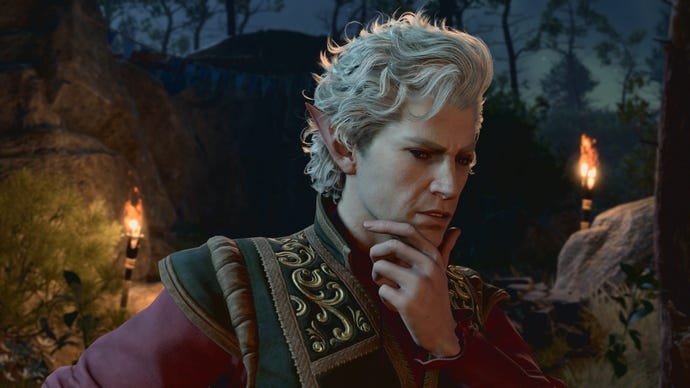
Evidently, there are no individual settings (outside of DLSS and FSR) that can magically send framerates skyrocketing by themselves. By combining a few choice changes, though, it’s still possible to give Baldur’s Gate 3 a respectable jolt. Here’s what I’d call its best settings to use:
- Launcher option: DirectX 11
- Model quality: Low
- Texture filtering: Trilinear
- Shadow quality: Low
- Fog quality: Low
- Ambient occlusion: Off
- Everything else: Ultra preset equivalents
Without any upscaling, these settings got my RTX 3070 / 1440p setup from 102fps to 129fps. That’s a 26% boost, with the same settings shunting the GPU’s 4K average up by 23% (56fps to 69fps). Maybe not the biggest proportional upgrades we’ve wrung out of one of these performance and settings guides, but at 1440p especially, it’s faster than using the Medium preset while keeping the vast majority of settings at Ultra level.
And, with the addition of Quality DLSS, that 129fps becomes 155fps, high enough that you’d need at least a 165Hz monitor to see every frame. FSR 1.0 on Ultra Quality may also be worth using, though since it gave me 153fps while being unable to match DLSS’s sharpness, there’s only one serious upscaler choice for GeForce RTX owners.
Disclosure: Former RPS deputy editor Adam Smith (RPS in peace) now works at Larian and is the lead writer for Baldur's Gate 3. Former contributor Emily Gera also works on it.
